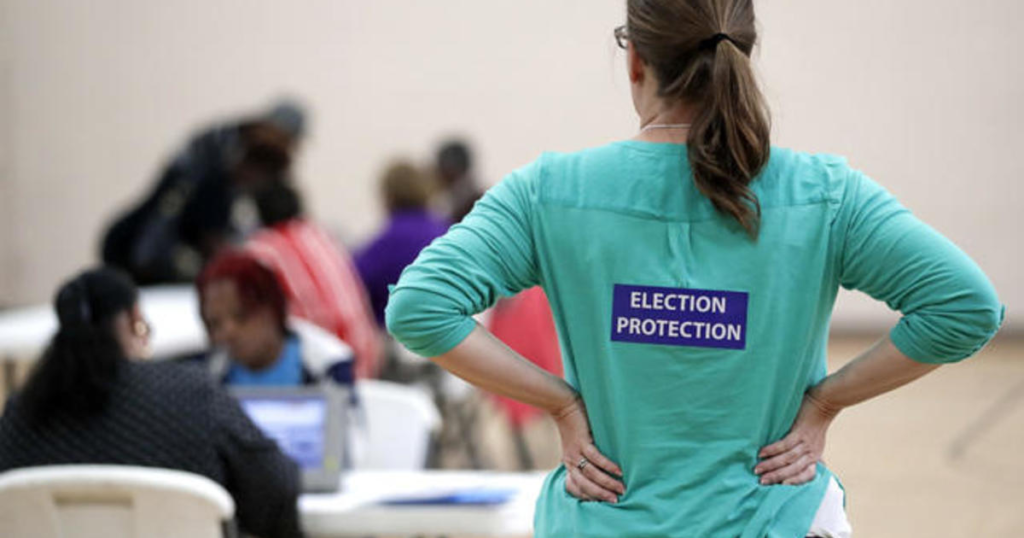Election Day Poll Watching: What You Need To Know

Image courtesy of CBS News
By Fernando Cordova
Despite the controversies that have occurred throughout the election cycle, they could pale compared to what might happen on Election Day, which is only a little less than 14 days away. In addition to voter fraud via absentee ballots being touted as a hot-button campaign issue despite being rare, poll-watchers across the country may have the final say in influencing and possibly changing people’s votes this coming election.
What are poll-watchers? Although poll watching may sound like a task that anybody could handle, it’s a bit more complicated than that, and just like voter fraud via vote-by-mail, it too comes with controversy.
As defined in a recent ABC News article, poll watchers are those who “monitor elections in most states,” often being tasked with making sure that voters are registered, enforcing rules and regulations at polling stations, and other responsibilities depending on the state. Although the tasks for poll watchers can be similar, each state/state political party has its regulations and rules for people to become poll watchers in the first place. In North Carolina, for example, poll-watchers are known as “observers” and are appointed by state political parties using a guide provided by the U.S. Election Commission. In New York, the process is similar, with party officials and candidates appointing their poll-watchers. In Pennsylvania, however, the process of becoming a poll-watcher gets a bit more complicated, as only a certain number are allowed per congressional district and have to be approved and certified by local election bureaus.
Even though poll-watching itself involves making sure that elections are fair by stopping instances of bias or interference, the practice itself has its ties to voter intimidation, which is illegal. As defined in one article, voter intimidation is “when someone attempts to sway a voter’s choice or prevent them from voting by creating a hostile verbal or physical environment.” Although there are protections against voter intimidation in federal statutes, such as 18 U.S.C. § 594, that doesn’t take away the fact that there have been instances of it in the past. In the 2004 election, a voter in Pima County, Arizona, reported a flier being distributed, which read, “Republicans vote on Tuesday, Democrats vote on Wednesday.” In another instance during the 2010 midterm elections, a voter in Pennsylvania received a flyer that falsely changed her polling location.
Although poll-watching is legal, precautions are still taken so that voters aren’t forced to vote one way or the other. This is seen in states having implemented protections so that poll watching doesn’t turn into voter intimidation. For instance, in Pennsylvania, poll watchers aren’t allowed to go where voters are casting their ballots. However, there have been challenges to laws like these. Recently, a federal judge dismissed a lawsuit brought on by the Trump campaign against this very same law, aiming to have poll watchers be able to work from anywhere within polling locations. In addition to this lawsuit, the campaign is actively seeking to recruit 50,000 volunteers as poll watchers in a new initiative known as “Army for Trump.” As a result, voting rights groups are concerned that the formation of the Trump Campaign’s poll-watching group would lead to cases of voter intimidation on Election Day. According to a recent New York Times article, there have been cases of Trump supporters disrupting early voting polling places in Fairfax, Virginia, chanting slogans such as “four more years.”
Despite the negativity surrounding poll-watching and voter intimidation, it’s important to note that there are laws in place that are meant to protect everyone’s vote. Since a poll watcher’s only job is to report and not to intervene, there is a guarantee that people will be able to safely cast their ballots.





